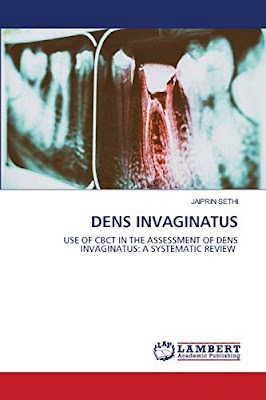Teeth begin to develop around the sixth week of intrauterine life, and the process continues through many stages. Even though developmental anomalies may occur at any stage, they will often manifest only later in life, when teeth are completely formed.
VIDEO: DENS INVAGINATUS: A report of two cases
Anomalies in shape (morphological anomalies) may involve only one tooth, a group of teeth, or even the complete dentition. The simultaneous presence of multiple anomalies may be related to specific syndromes, especially in patients with chromosomal alterations combined with multi-systemic alterations.
Dens invaginatus is a developmental anomaly resulting from invaginations in the external surface of the tooth crown prior to mineralization of the hard tissues.
The etiology of the condition is still controversial and may be related to local delays in enamel formation, folding of the enamel organ, or external influences on the tooth bud.
The etiology of the condition is still controversial and may be related to local delays in enamel formation, folding of the enamel organ, or external influences on the tooth bud.
The teeth most commonly affected are the upper lateral incisors, followed by the upper central incisors. Mandibular teeth are rarely affected, and few cases have been reported involving the deciduous dentition.
Even though dens invaginatus and shovel-shaped incisors are rare anomalies, they may pose challenges to dental practitioners in terms of the restorative and endodontic treatment of the teeth affected.
When deciding upon the most appropriate treatment, it is important to consider the degree of pulp involvement vs. biophysical characteristics of the tooth, symptoms reported, and pulp vitality test results.
The present study describes the conservative treatment adopted in a non-syndromic female patient presenting with shovel-shaped upper incisors and dens invaginatus in tooth 22.













